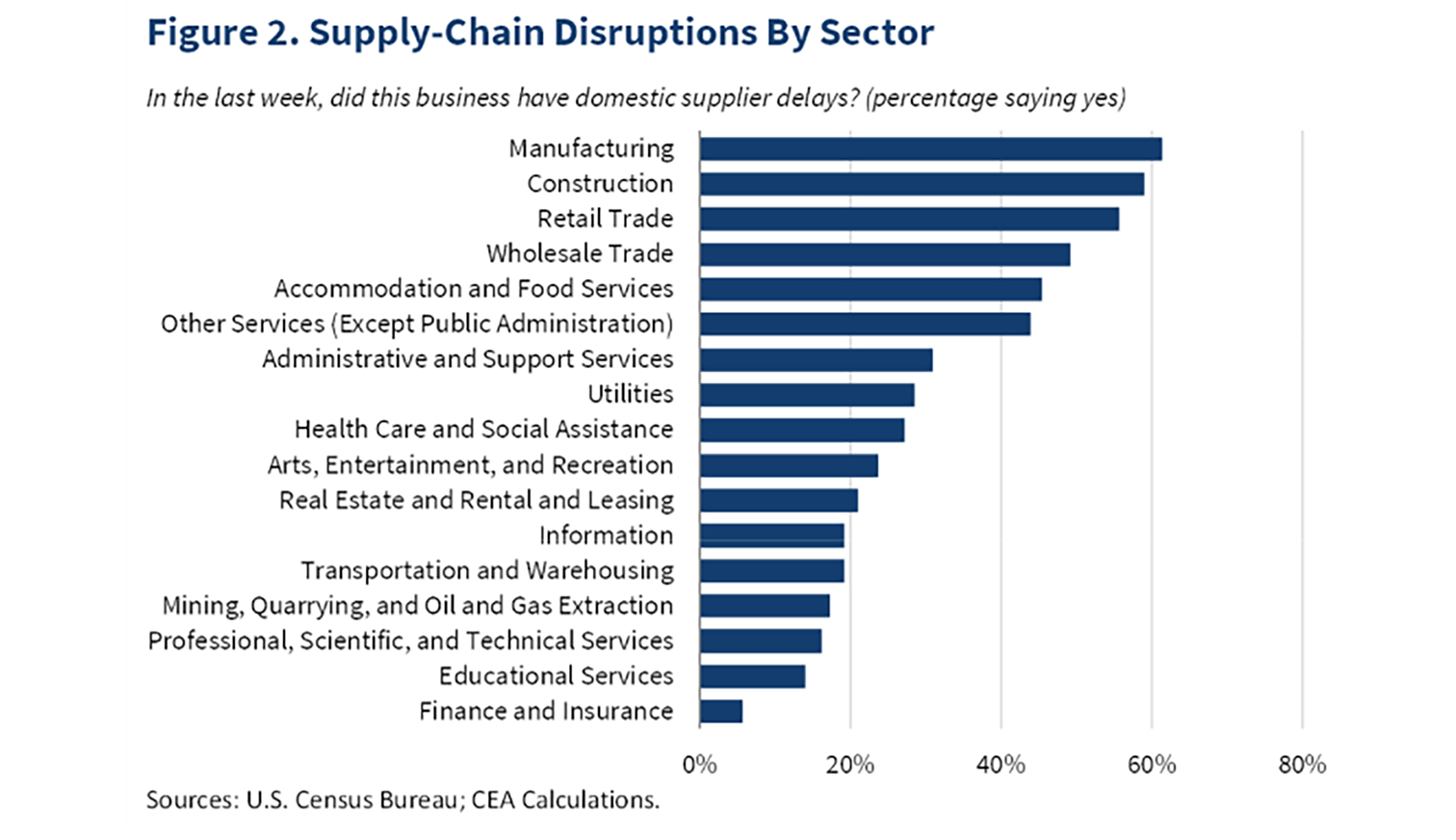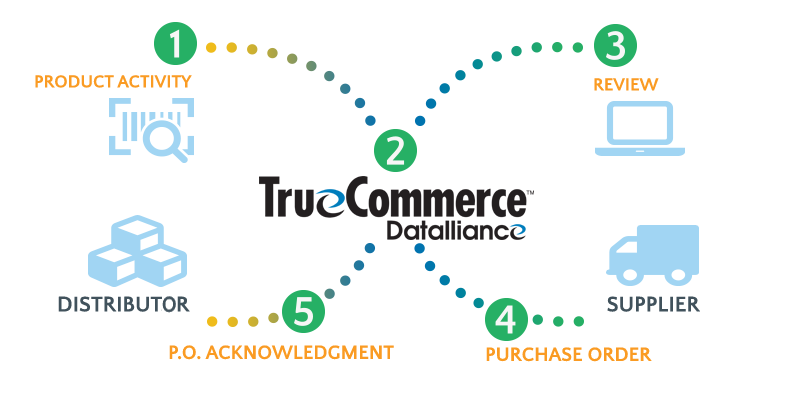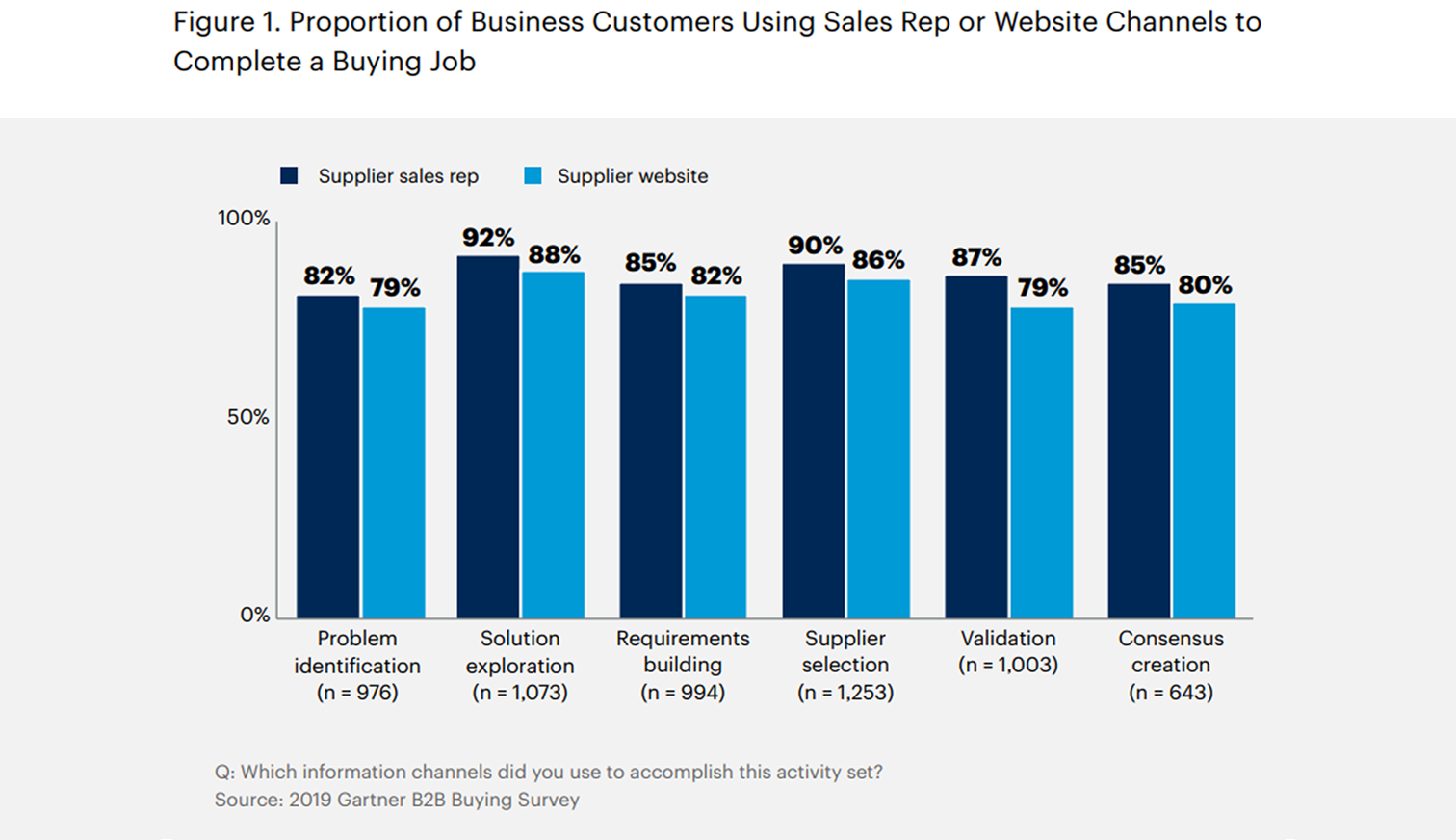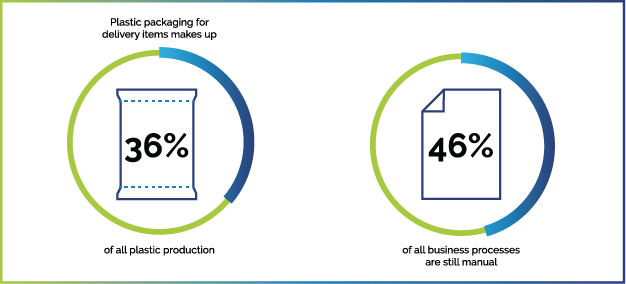Supply Chain Trends for 2022 and Beyond

March 16, 2022
Supply chains faced a unique set of challenges over the past two years, and the emerging issues have only continued to evolve. Last year, we saw a total reconstruction in how supply chains functioned and a shift towards new technologies. Omnichannel, supply-chain-as-a-service models, B2B eCommerce, and an overhauled workforce are a few of the highlights.
Many of these trends have already been set in motion, creating a new set of table stakes for brand success. Let’s look at what the rest of this year— and beyond — has in store.
#1: Delays and Disruptions Have Become the Norm
“If you are expecting things to get back to how they were, they aren’t going to. You have to adapt and embrace change to survive and thrive. The good news is that there are products and companies providing services that can help you take and maintain control of your supply chain.”
— Josh Wayne, VP, Commerce Products

Disruptions across all sectors in the past two years have led to a ripple effect that’s slowed down basically all industries. In late 2021, nearly 40% of small businesses in the US reported delays in a one week period.
These delays won’t go away on their own; they’re now a fact of life for suppliers. Manufacturers, distributors, and retailers must be resilient, agile, and ready to combat inevitable delays. For example, we’ve all learned by now that depending on one supplier is bound to cause issues. Moving forwards, brands will need a new strategy and a more diverse supply chain to mitigate unforeseen breaks in the supply chain.
Setting up alternate suppliers and logistics methods to fall back on when something goes wrong is crucial. So is keeping better track of stock, both in warehouses and stores, as well as in-transit.
Almost every company has felt the impact of this problem. Businesses that can rise above it will likely generate greater profits and earn customer loyalty.
#2: Brands Invest in Automated Supply Chain Technology
“Things are becoming faster in all aspects of the supply chain, from providing real-time data on product and inventory, to multichannel sales, to digitization across the supply chain, often using tools like AI and automation. Businesses are becoming smarter but doing that through new applications and tools that help improve their processes and learn more about their consumers.”
– Ryan Tierney, VP Product Management
With increased uncertainty in supply chains, companies are choosing to invest more and more into digital solutions. Using pen and paper is no longer an efficient way to run a business. Automation can streamline weeks of manual work, freeing up more time and money to invest elsewhere. But even more importantly, automated solutions let businesses respond to changes quickly, and get valuable information in near real time. Here are a few ways businesses are leveraging automation in 2022:
- Distributors and retailers are using Supplier Enablement Platforms to diversify their supplier bases, while digitizing the order process for faster communication.
- eCommerce brands are using integrations to send orders directly from their listings on Amazon and other marketplaces to their ERPs, which can send back-order status updates and accurate inventory levels.
- Businesses of all sizes are investing in EDI software, which can relay order, shipping, and invoice documents in moments, and automatically deliver that data to their ERP system.
#3: Increasing Importance of Real-Time Inventory Visibility
“There can’t be any surprises in your supply chain anymore. You must have visibility to understand when you will get product and when you can deliver it to your customers. If you don’t have that, you won’t grow your business.”
— Josh Wayne, VP, Commerce Products
When it comes to supply chain visibility, deep insight inventory availability is something a top priority—and for good reason. Customers value transparency during the buying and shipping process, whether they’re other businesses, or end consumers. But between delays and disruptions, changing consumer behaviors, and with brands opting to diversify their supply chain and expand into omnichannel markets, true visibility is more difficult to achieve.
Digital solutions like EDI can provide visibility into product movements across the supply chain. But for procurement professionals, Vendor Managed Inventory (VMI) software offers a way to not only see inventory levels but use that data to keep shelves stocked.
VMI platforms use real-time sales data, forecasting data, and pre-set objectives like min/max inventory, to create re-ordering recommendations down to individual locations. Suppliers use those recommendations to proactively replenish stocks before they hit zero. And because the data goes straight to the supplier, they can respond more quickly to demand shifts. All of this creates a better customer experience, because let’s face it: in stock is always in style.
#4: A Renewed Focus on Customer Experience
“Visibility is critically important because delivering on customer expectations has never been more challenging. Amazon, Walmart, and other leading retailers have continued to raise the bar on offering consumers broad assortments, rapid delivery and consistently meeting expectations. Delivering on those expectations requires deeper integration across the supply chain, more collaboration, sharing of data and agility in meeting a unique set of requirements across a broad set of channels.”
– Mike Gross, Sr. VP, Customer Experience
Speaking of the customer experience, 67% of customers say their standards for good customer service are higher than ever, while 95% are more likely to be loyal to a company they trust. Marketing in 2022 is all about building an individual connection, backed by a seamless buying process, transparent order statuses, and reliable delivery.
What can brands do to improve their experience? As mentioned above, faster order processing, quicker inventory turnover, and fewer errors create happier customers. But in the digital age, product information is often the difference between a great buying experience and a terrible one.
As many as 22% of returns are caused by product information errors; meanwhile product content issues account for nearly 100% of “expectation vs. reality” memes. To solve this problem many businesses are turning to Product Information Management (PIM) systems, which centralize product information, offer tools to enrich content, and can distribute consistent and correct information across multiple channels.
Other ways to create a better customer experience include:
- Adding 360-degree images or videos to online product listings
- Offering multiple delivery options, like BOPIS, for eCommerce buyers
- Utilizing cross docking to save warehouse space and speed up delivery
- Syncing inventory levels across sales channels to avoid overselling
- Enhancing consumer communication with customer management tools
#5: Continued Explosion of B2C and B2B eCommerce
“B2B eCommerce continues to grow at a faster rate than B2C eCommerce. 2020 pushed a lot of businesses out of their comfort zones and forced them to build digital muscles. They are now realizing they can address the nuances of B2B buying and making the necessary investments to bring this offering to life.”
– Lanette Young, Product Manager
Even before the pandemic, there was a continual shift toward eCommerce sales. Brick-and-mortar stores are clearly no longer enough to satisfy customers and investing in an eCommerce platform has become table stakes. But since March 2020, the steadily growing market experienced exponential growth.
- 54% of shoppers prefer to shop online, and 40% of consumers have avoided physical locations to some extent.
- 85% of consumers globally shopped online in 2020.
- 63% of shoppers who use Facebook use it for shopping activities.
- 2022 is expected to be “the first trillion-dollar year” in eCommerce sales
B2B eCommerce in particular has exploded, with a projected CAGR of 18.7%. This growth can be traced back to the need for speed and digitalization. B2B eCommerce storefronts offer a B2C-like experience, but with the all the bells and whistles needed to accommodate business buyers. Not only is it easier; purchasing from a B2B eCommerce website is often faster than traditional procurement methods. For brands searching for a way to recoup lost costs and gain new profitable investments, B2B eCommerce may be a key investment in 2022.
#6: Logistics Costs Rise
“Shipping costs keep going up, and there isn’t an end in sight. Many businesses are being forced to raise prices for consumers to cover the increased cost in the supply chain. Consumers are more aware than ever of supply chain issues, and they’re more lenient—but it’s still a balancing act for most brands.”
– Ryan Tierney, VP Product Management
Managing a large business was expensive in the past, and the volatility of the supply chain industry has led to a surge in expenditures. Carriers like FedEx have implemented historic rate changes in recent months; at the same time, limited ocean freight space continues to drive up shipment costs.
Supply shortages and labor deficits are also having an impact. Between the pandemic and employee scarcity in key areas, severe shipping delays have made both importing goods and exporting products slower, more expensive, and more difficult to do.
Many companies have passed this price to the customer, but better automation, inventory forecasting, and shipping strategies can reduce some of these costs and keep your prices competitive.
#7: Sustainability Stays Top of Mind
“The digital age has connected consumers to brands like never before in our history. Brands that connect their broader social and environmental impacts to their customers’ ideals and values can create consumer loyalty and viral word-of-mouth support. To do so, they need to consider everything from the materials used to make their products, to the suppliers they source from, to their packaging and other supply chain waste.”
– Mike Gross, Sr. VP, Customer Experience
More and more consumers are becoming concerned with environmental sustainability, and businesses are trying to find ways to reduce their footprint and be more ethical.
73% of Americans would stop purchasing from a company that doesn’t care about climate change. As 62% of Americans have noticed at least some impact of climate change on their own community, this is likely an issue on many people’s minds.
Sustainability can be a profitable investment, resulting in lower energy usage, more efficient production, less packaging, and savings to the tune of several million dollars. It may cost money to change things up now but could save more in the long term. Here are a few ways to get started with supply chain sustainability:
- Shifting to EDI can save hundreds of thousands of pieces of paper per year
- Better inventory management and solutions like VMI reduce safety stock that’s often thrown out
- Consolidating shipments lets you save on transportation while using fewer trucks
Stay Ahead of These Trends
It’s time to prepare for these trends as they extend throughout 2022 and the years ahead. With the inevitability of production delays, be ready for a spike in logistics costs and consider investing in supply chain integrations to combat these issues.
As expenditures rise, you need to focus also on finding the most profitable buying channels to invest in, such as B2B eCommerce, and on providing a better experience to retain and re-engage as many of your customers as you can.
We’re already a quarter into 2022 and these trends aren’t going anywhere. If you want to learn more about how TrueCommerce’s automated solutions can help your business stay ahead, talk to one of our specialists today.
About the Author: As Chief Technology Officer, Peter Spellman leads the global technical direction, development, and InfoSec, as well as the evolution of TrueCommerce’s product portfolio. Peter is a proven technology executive with more than 30 years in enterprise software and development, technical leadership, and entrepreneurial experience. He founded and served as CTO of iWant, SupplyScape, and Tracelink. He also served as CTO of Performaworks, INTTRA, and Optoro, operating B2B global technology platforms handling billions of transactions a month. Spellman was the AWS Startup Challenge Winner for Business Applications in 2013 and holds patents in network-based technology, as well as several other patent-pending applications.
Share this post:
Stay ahead of the competition
Get expert supply chain insights delivered directly to your inbox weekly.



